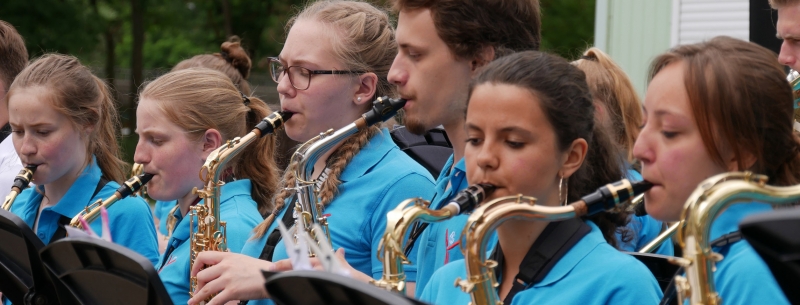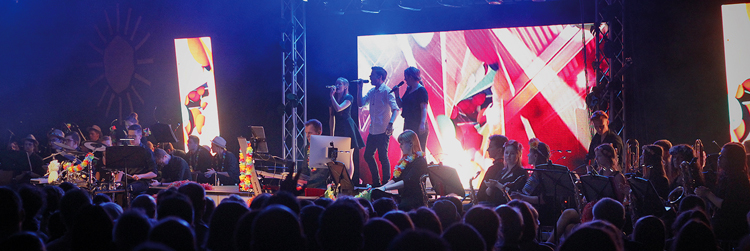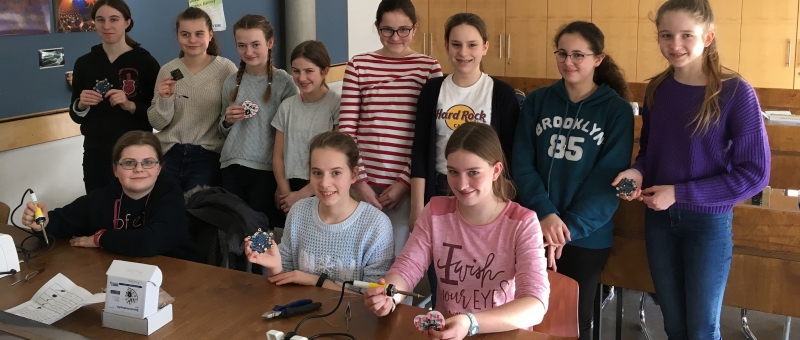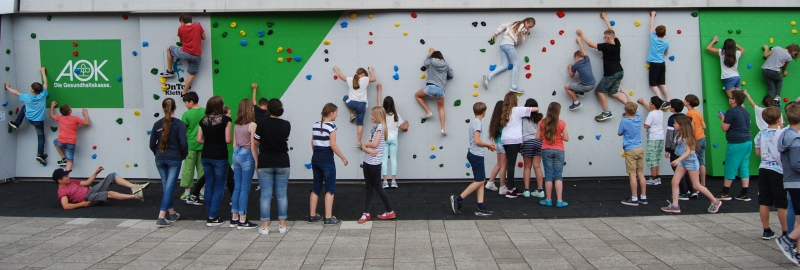School Profile…
… of Peter-Joerres-Gymnasium Ahrweiler, a State High School and its educational system
The history of PJG dates back to the year 1860 when for the first time a class for higher education was established (only for boys at that time). The school then was housed in a building called "Weißer Turm". Peter Joerres was the school's first principal; it is after him that the school was named in 1984.
Today more than 1,100 students are taught by 80 teachers. The classrooms and the modern school building are surrounded by parks.
A state high school’s (Gymnasium) structure starts after four years of elementary education and comprises 9 levels. These levels are broken down into two main units: Secondary Education I (Sek I) from level 5 to 10 and Secondary Education II (Sek II) for forms 11 to 13.
In the Federal State of Rhineland-Palatinate Sek II is also called "Mainzer Studienstufe" (MSS) that roughly translates as "unit preparing for academic studies". Students here are given the opportunity to focus on individual subjects. The main subjects according to this scheme are taught five hours a week (Leistungskurs), whereas the other subjects are taught two to three hours a week (Grundkurs). A typical syllabus thus comprises about 30 hours of teaching a week.
Admission to Gymnasium is given upon a recommendation for this school type by the preceding elementary school. Forms 5 and 6 are called orientation level, providing teachers and parents with the overall picture of the individual pupil's achievements and with a help to decide whether attending Gymnasium had been the right decision.
A first degree can be obtained after Sek I, however, the classical educational aim of Gymnasium is the "Abitur", i. e. final exams that a student needs to pass at the end of form 13. Abitur represents as well the formal entitlement to enter a German university as the starting point of a higher vocational training.
PJG offers a variety of both natural sciences and the arts and puts great emphasis in what is called social intelligence. Our individual profile stresses natural sciences and music. The technical teaching and learning equipment is advanced; the latter is shown e. g. in the hardware of the computer department, a communications server providing access to the World Wide Web and the intra-net likewise. The cultural and social centre piece of the new school building is the library in which naturally the classical usage is provided for students and staff along with access to all media. In addition, a "multimedia lab" provides students and teachers with state-of-the-art facilities. A huge panel on the entire roof with photoelectric cells is the school's link to future energy supply.
A considerable share of this high standard is due to the school’s friends’ association (Schulförderverein) a non-profit group of committed parents and other supporters.
PJG is proud to maintain partnerships with schools in Belgium, France, Poland and the UK.
The city of Bad Neuenahr-Ahrweiler is situated in the west of the Federal Republic, approximately half way between the large industrial Ruhr area around Essen in the north and the Rhine-Main-area in the south (each within a one to two hours' distance by train).
The area has got a long agricultural history with a strong bias in viniculture. Wine growing dates back to Roman influence in the area, and it is the steep vineyard that is the characteristic feature of this part of the Eifel mountain range. The area attracts many national and international tourists. Community and District are eager to increase the area’s reputation as one of leisure, spa, and fitness. The backbone of this modern concept is the older infra-structure of Bad Neuenahr with its thermal springs.










